There isn’t a shortage of historical forts and castles in England.
What was once the epitome of efficient military architecture is now a popular tourist attraction. That’s quite normal as it has over 1,100 years of history behind it.
In this post, you’ll discover all the facts about Warwick Castle, one of the most famous castles in all of England.
1. Where is Warwick Castle located?
The town of Warwick is located 11 miles (18 km) south of Coventry. It is mostly a small market town and the county town of Warwickshire.
In historical terms, it has been of strategic importance because of its location in the English midlands.
Another important historical notion is that it was close to the transport routes of the Fosse Way, a Roman road connecting the Midlands to Exeter in South West England, and the River Avon.

2. Warwick Castle goes back to the 10th century
Before the initial version of what we know today as the Warwick Castle was built, an Anglo-Saxon burh already existed there.
This burh was built by Æthelflæd, ruler of the Kingdom of Mercia and daughter of Alfred the Great. Alfred the Great was the king of the Anglo-Saxons from 886 until 899.
This burh, which was one of ten in the Kingdom of Mercia, was built in the year 914 to defend the Kingdom from the invading Danes, A north-Germanic tribe the inhabited the Southern part of Scandinavia.
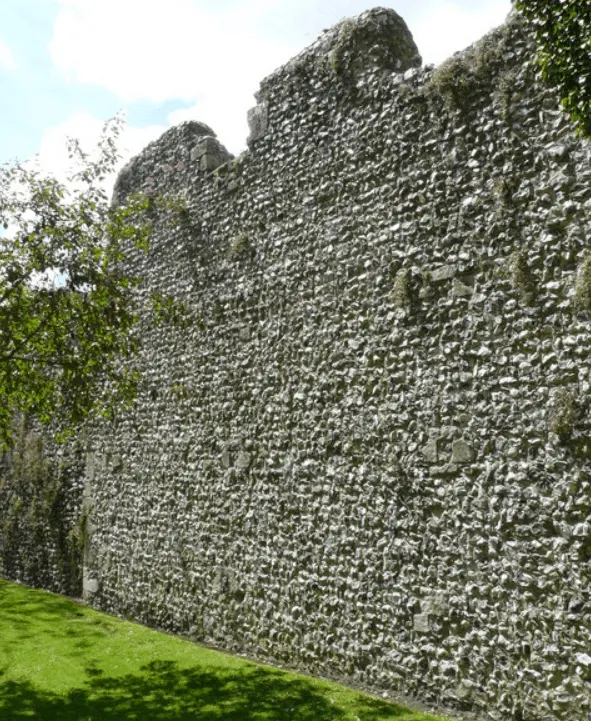
3. Warwick Castle was built in 1068
In the 11th century, the Norman Conquest took place in England. This means England was then occupied by an army of Norman, Breton, Flemish, and French soldiers led by the Duke of Normandy.
The Duke of Normandy also referred to as William the Conquerer was the first to establish a motte-and-bailey castle at Warwick.
A motte-and-bailey castle consist of (as you surely guessed) a motte, which is basically a mound with a tower on top of it, and a bailey, which is an enclosed courtyard.
The original version of Warwick Castle was made of wood.

4. The castles was surrendered with a trick
After the Norman Invasion and the construction of the first version of Warwick Castle, William the Conqueror appointed Henry de Beaumont, son of a powerful Norman family, as constable of the Castle.
Shortly after, Henry de Beaumont became the first “Earl of Warwick.”
During the reign of the second Earl of Warwick, Roger de Beaumont, something peculiar happened.
Roger’s wife was told in 1153 that her husband had died, and shortly after surrendered ownership of the castle to the invading army of Henry of Ajou, who would later become King Henry II.
She didn’t know though that it was a trick and Roger was actually still alive and well. An unverified story mentions that Roger de Beaumont died upon hearing the news that he had just lost his castle in this painful way.
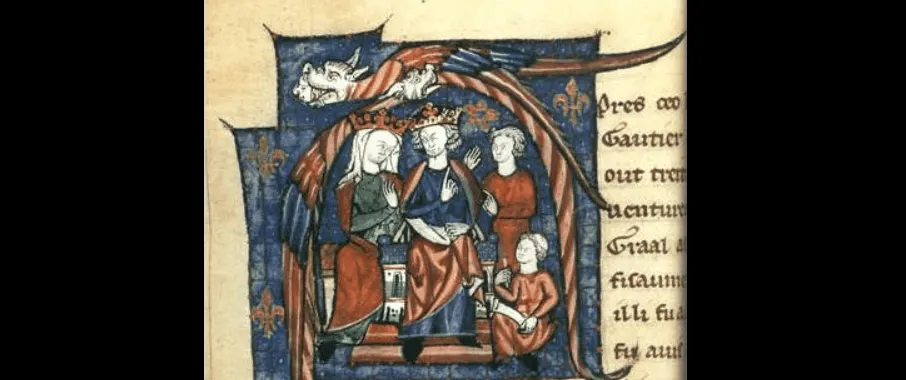
5. The first stone castle
Even though Henry II gained control over the Castle of Warwick, he handed over control back to the Earl of Warwick.
He did however turned the wooden structure into a stone castle during his reign which lasted from 1154 until he died in 1189.
The first stone castle had the form of a shell keep and all the buildings were built against the curtain wall, which means a defensive wall in between two towers of a castle.
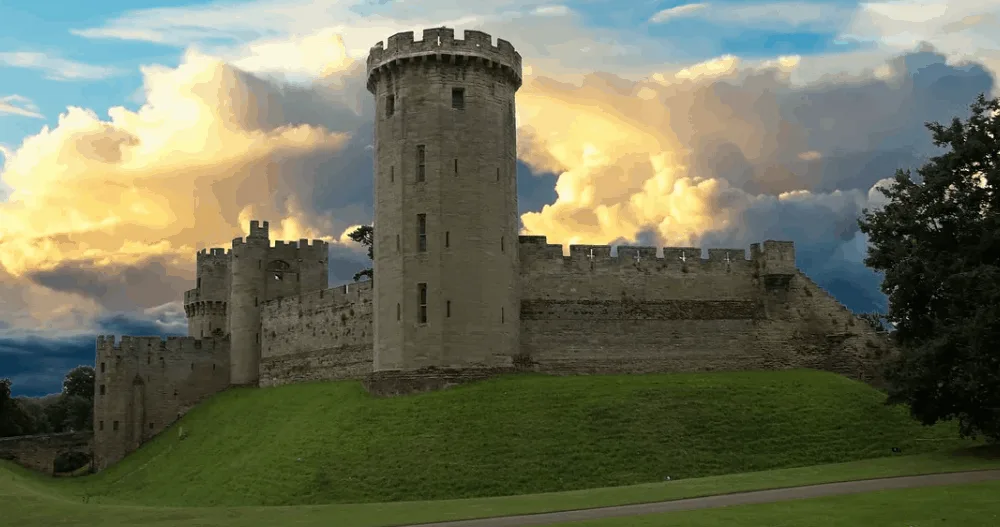
6. A serious upgrade in the 14th century
Thomas de Beauchamps was the 11th Earl of Warwick. He is known to be one of the founders of the and the third Knight of the Order of the Garter, the most senior knighthood in the British honor system.
Under his reign between 1330 and 1360, some serious improvements were made to the Castle of Warwick. These include
- A gatehouse
- A fortified gateway
- A reconstructed wall
- Two towers named Caesar’s Tower and Guy’s Tower
- The Watergate Tower

7. The castle was converted into a country-house
In the 15th and 16th centuries, the use of castles was in decline. Many of them were being converted into comfortable residences.
In the early 17th century, the same thing happened to Warwick Castle. King James gave the castle to Sir Fulke Greville in 1604.
By then the castle had become a complete ruin and renovations were made to turn it into a country-house.
An interesting fact about this period of Warwick Castle: Fulke Greville spent over £20,000 (£4 million as of 2020) on the renovations!
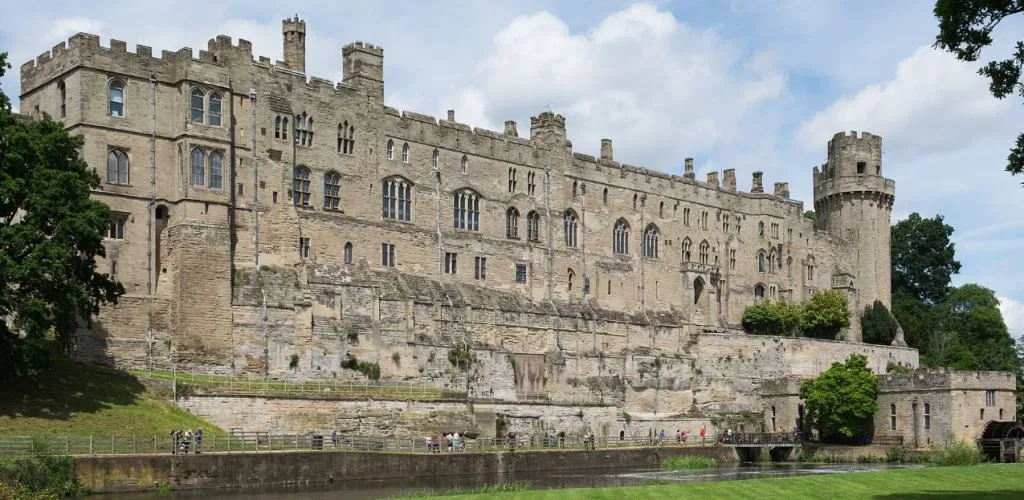
8. Warwick Castle became a popular tourist attraction
It’s not just today that tourists flock to Warwick Castle to get a glimpse of its amazing history. Tourists have been coming to Warwick Castle since the 17th century.
This only increased in the 18th century and even Queen Victoria visited the castle to meet the 4th Earl, George Guy Greville, in 1858. This was paired with a lot of festivities in the area.
It got a bit out of hand though. By 1885, too many tourists were creating trouble and the Earl at that time temporarily closed the castle for visitors.
Locals were shocked by the news and luckily this didn’t last long. By the turn of the 20th century, the castle even had a ticket office and full-time guides to tour the tourists around.
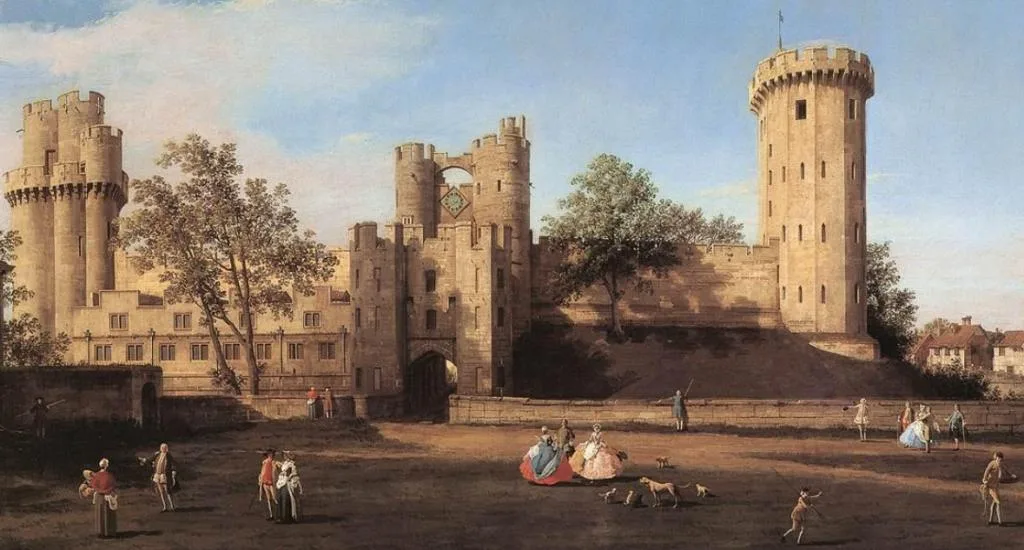
9. Warwick Castle was sold in 1978
Ever since King James gave the castle to Sir Fulke Greville in 1604, Warwick Castle had been in the possession of the Greville family.
After 374 years in their possession, it was finally sold in 1978 to the Tussauds Group for a total fee of £1.3 million.
The Tussauds Group became part of Merlin Entertainments in 2007. In the same year though, Merlin, Who still owns the London Eye, sold some of its properties including the Madame Tussauds Museums and Warwick Castle to entrepreneur Nick Leslau for a whopping £622 million.
Merlin is now renting Warwick Castle back on a 35-year lease and is still in charge of its management.

More interesting facts about Warwick Castle
10. The motte of the castle is called Ethelfleda’s Mound after the daughter of Alfred the Great. Nothing of the castle originates from this Anglo-Saxon period though and dates solely from the Norman period.
11. It is believed that the Warwick School was established by Æthelflæd of Mercia in the year 914 A.D. in the first burh that was built on the location of Warwick Castle. This would not only make it the oldest boys’ school in all of England (the fifth total of all schools), but also the oldest surviving school founded by a woman.
12. William the Conqueror built his motte-and-bailey castle in Warwick for strategic regions. It was built to serve as a stronghold for when he moved north with his army during the Norman Conquest of England. Obviously having the River Avon just nearby had additional benefits.
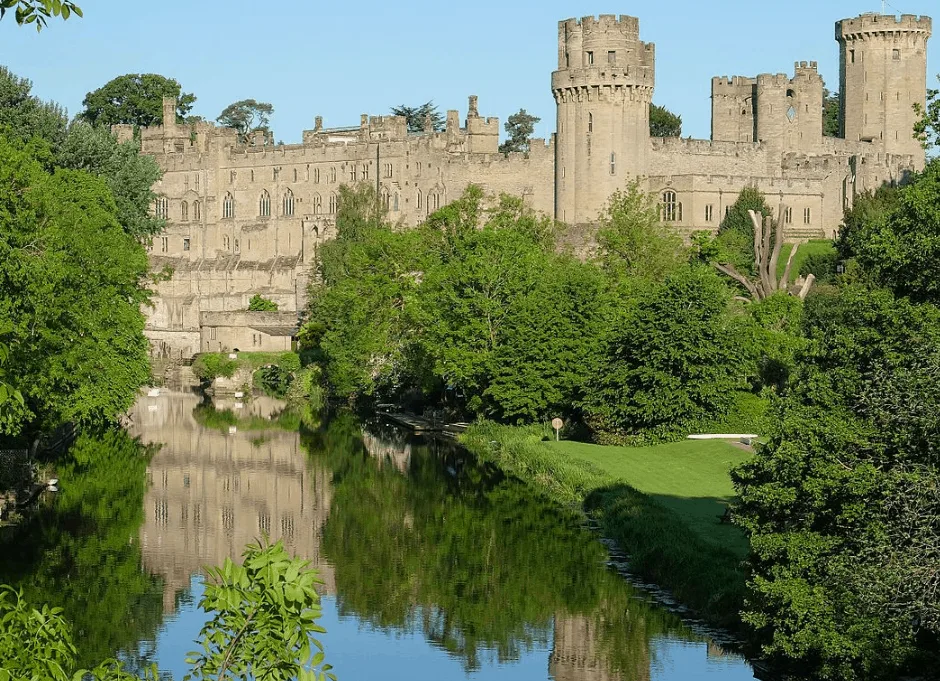
13. Even though the River Avon was nearby, the towers facing the river wouldn’t have done much to defend the castle and were more a symbol of wealth, in this case, that of the Beauchamp earls. Apparently, this was a trend in the 14th century.
14. In the year 1086, William the Conqueror ordered a survey of England and parts of Wales. Of the Warwick area, there is a reference to 11 castles, of which Warwick Castle was the least recorded. It mentioned that to build Warwick Castle, 4 houses needed to be demolished.
15. The trick used on Roger de Beaumont’s wife to gain control of Warwick Castle led to the death of her husband. But why did King Henry II give the castle back to the Earl of Warwick? Because they had supported his mother, Empress Mathilda, in The Anarchy, a series of civil wars in England which lasted from 1134 until 1154.
16. The Caesar and Guy Towers, which were built in the 14th century, might have been inspired by French models. One example is the tower of the “Château de Bricquebec” located in Normandy in northwestern France.
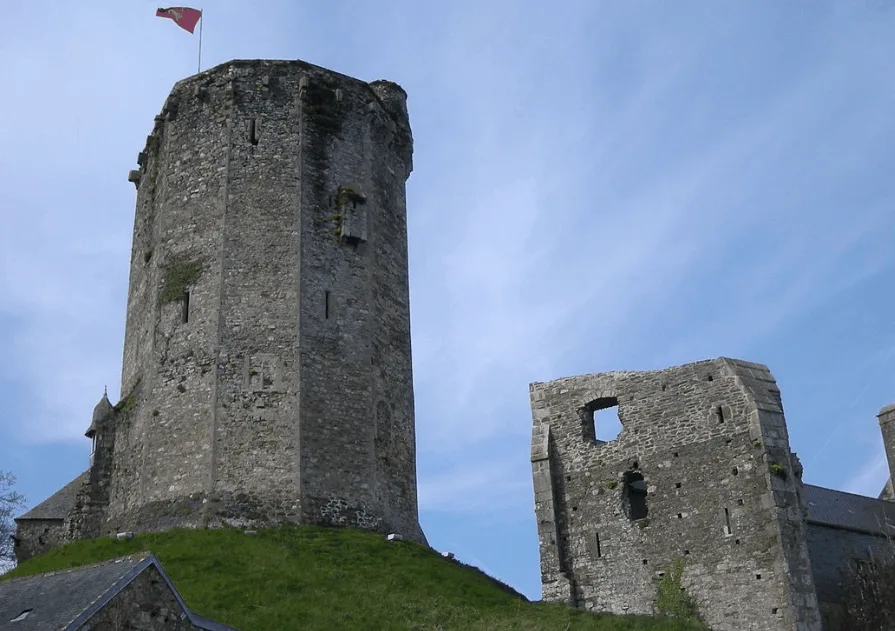
17. Warwick Castle, and more specifically its dungeons, has been used as a prison on several occasions. One of the most notable prisoners that “served time” in Warwick Castle was King Edward IV, who was enprisoned in the Castle by the Earl of Warwick, Richard Neville, in the summer of 1469.
Neville wanted to rule England but that didn’t work out too well for him. Under constant protest, he released King Edward IV and was subsequently killed in the Battle of Barnet, fighting against the King in 1471 during the Wars of the Roses.

18. Warwick Castle was once owned by a 2-year-old girl. Henry de Beachamp only had one daughter named Anne. When he passed away she was only 2 years old and she inherited the castle. Unfortunately, she died at the age of 5.
19. Ever wonder how Richard Neville became Earl of Warwick? Because Anne died at the age of 5 and didn’t have any heirs, the title was passed on to her maternal aunt, who therefore passed the title to her uncle by marriage, Richard Neville.
20. In 1640, the castle was reinforced to prepare for the First English Civil War fought between Parliamentarians (“Roundheads”) and Royalists (“Cavaliers”). The adopted son of Sir Fulke Greville who received the castle from King James, Robert Greville, was able to withstand the siege, and the castle was yet again used as a prison for captured Royalists.
21. Warwick Castle has a connection to the famous Gunpowder Plot. The conspirators were hiding and awaiting news in Dunchurch in Warwickshire, not too far from Warwick Castle. When they heard the plot had failed, they stole horses from the castle’s stable to facilitate their escape. It didn’t help, all of them were executed in one of the most gruesome ways conceivable, by being hung, drawn, and quartered.
22. Queen Elizabeth I visited the castle in 1566 and even stayed in the castle for four nights in 1572. To accommodate the Queen, a timber building had to be constructed due to the severe state of decay the castle found itself in after years of neglect during this period.

23. Mickey Mouse almost never existed. It’s real! A distant relative of Walt Disney named Edward Disney was held prisoner in Warwick Castle after the First English Civil War in 1642. Luckily he was a rich nobleman and they didn’t chop off his head. This way, we were able to enjoy the adventures of Mickey, Donald, and the rest of them as a kid.
24. Sir Fulke Greville, the owner of Warwick Castle in the early 17th century didn’t die of natural causes. He was actually stabbed on September 1, 1628, by one of his servants after he found out he only left him £8,000 in his will. he died of his two stab wounds 4 weeks later.
25. Warwick Castle has been owned by 36 different individuals and has been Crown property for 4 times under 7 different rulers in its 950+ years of history.
26. In its history, Warwick Castle hasn’t been owned by only men. Because it was owned by the Earls of Warwick, it could also be transferred to girls and women, and this has been the case 3 times.
27. Some more interesting facts about Warwick Castle owners is that 11 of them were under the age of 20, including a two-year-old girl and a three-year-old boy. Three of its owners have died in battle, two have been executed and 1 has been murdered (Sit Fulke Greville).
27. Since 2005, Warwick Castle is home to the “trebuchet.” It’s the world’s largest working catapult. It’s 8 meters (59 ft) tall (the equivalent of a 3-story building), made from over 300 pieces of oak, and weighs 22,000 kilos. It can send a projectile weighing 13 kilograms (29 lb) to a distance of 249 meters (817 ft) at a speed of 195 kilometers per hour (121 mph)? This makes it the most powerful working siege engine in the world.
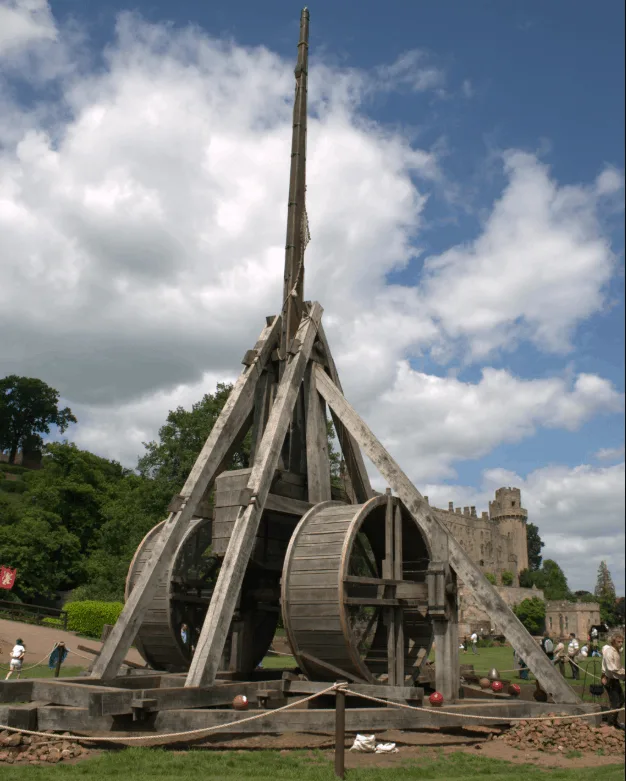
28. Warwick Castle is home to some of the most impressive armories in all of England, dating back to the first century. In fact, only the Tower of London has more weapons on display.
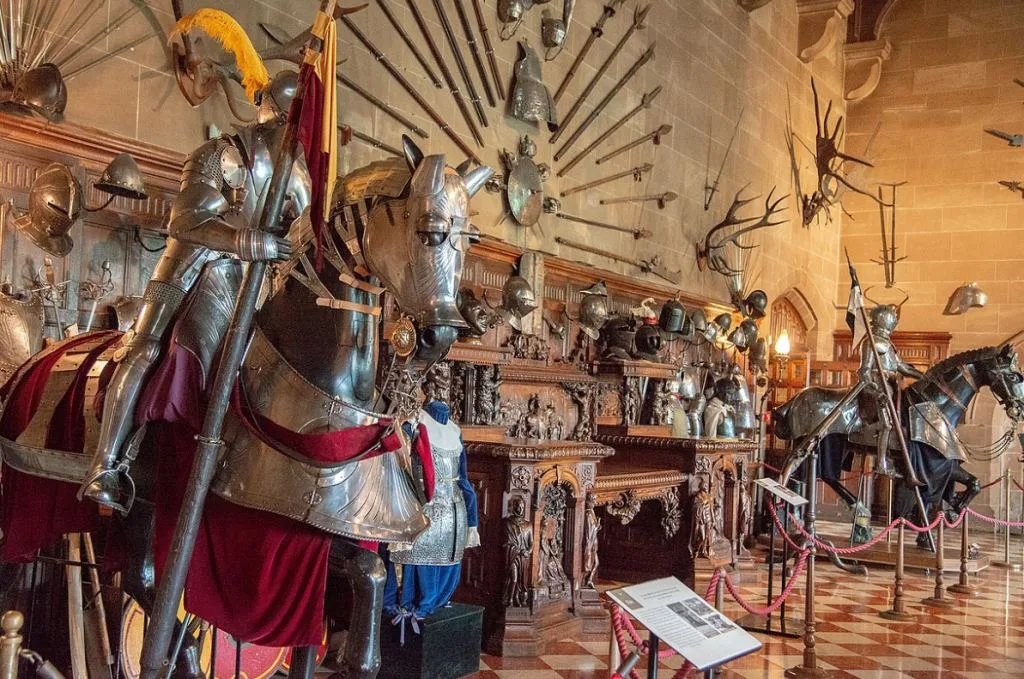
29. Is Warwick Castle haunted? Many stories claim it is! One of them includes one of the owners, Sir Fulke Greville, haunting the Castle after being murdered. There’s one problem with that though, he wasn’t actually murdered in the castle.
30. Warwick Castle is the most visited stately home in England, and it’s estimated that over half a million people visit the castle every year.
31. Warwick Castle is a protected site. It is protected against unauthorized change as a Scheduled Ancient Monument and has a status as a “nationally important” archaeological site or historic building,
32. One of the last paintings by Canaletto of Warwick Castle that remained in private hands will move to the Metropolitan Museum of Art in New York. This way the public can enjoy this amazing painting created in 1748.


Leave a comment
You must be logged in to post a comment.